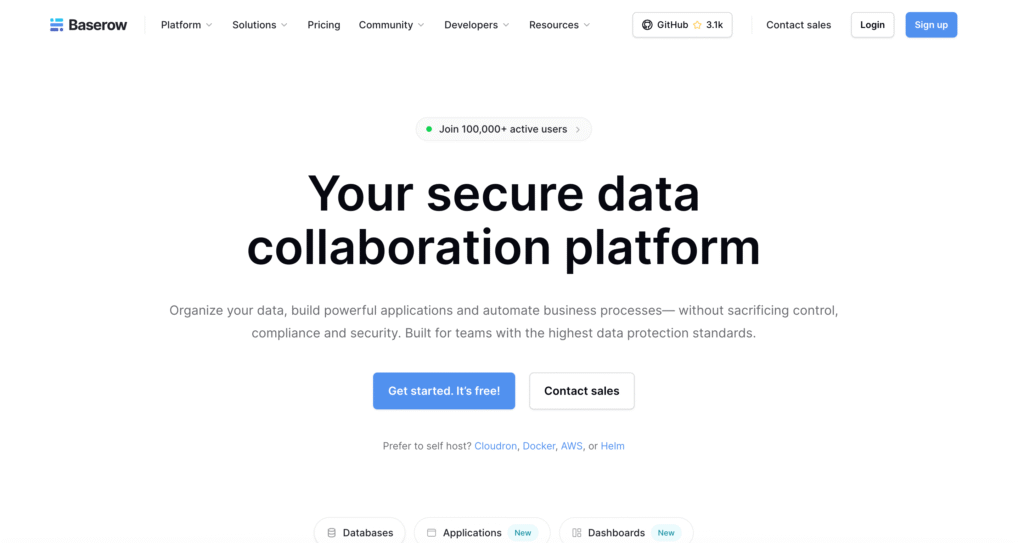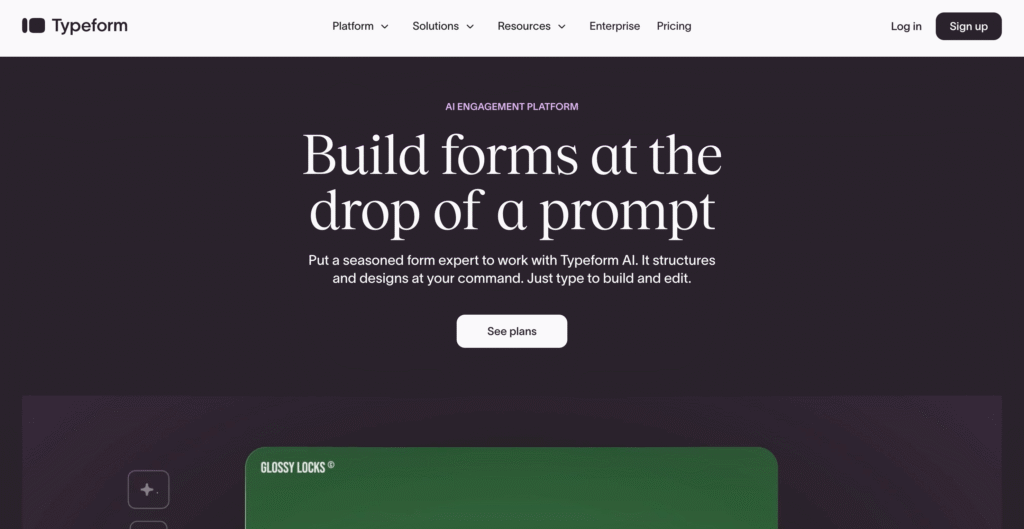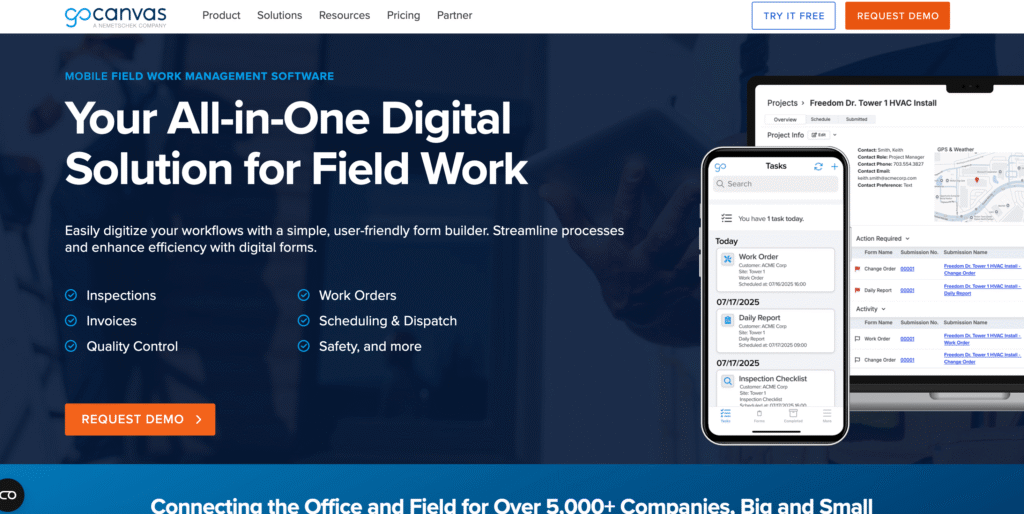Key Takeaways
- AI-driven data entry software in 2025 enhances accuracy, reduces manual errors, and streamlines workflow automation.
- Integration of Intelligent Document Processing (IDP) and Robotic Process Automation (RPA) transforms traditional data management.
- Businesses adopting top data entry tools gain higher efficiency, faster processing, and improved strategic decision-making.
In 2025, the global business landscape continues to undergo a rapid digital transformation, and at the heart of this evolution lies one crucial function—data entry. Once a repetitive and time-intensive task, data entry has evolved into a sophisticated, AI-driven process that enables businesses to process, manage, and analyze information with unparalleled speed and precision. As companies generate vast amounts of structured and unstructured data daily, the demand for efficient, secure, and automated data entry solutions has never been greater. The rise of advanced technologies such as Artificial Intelligence (AI), Machine Learning (ML), Robotic Process Automation (RPA), and Intelligent Document Processing (IDP) has completely reshaped how organizations capture and utilize data across industries.

The year 2025 marks a turning point where automation and intelligent workflows have become standard in data management operations. Businesses are now shifting their focus from manual input to strategic data orchestration—allowing employees to dedicate more time to analysis, innovation, and decision-making rather than repetitive data handling. According to industry research, the global data entry software market is projected to grow steadily, driven by the need for accuracy, scalability, and integration across digital systems. Enterprises of all sizes are adopting smart data entry tools to minimize human errors, improve productivity, and gain deeper insights through real-time analytics. This shift demonstrates that data entry is no longer a back-office task—it is now a cornerstone of digital intelligence and operational excellence.
Modern data entry software offers far more than just digitization. These platforms combine OCR (Optical Character Recognition), NLP (Natural Language Processing), and intelligent validation systems to ensure that every piece of information entered is accurate, verified, and ready for integration into enterprise databases, CRMs, and analytics platforms. Whether it’s automating invoice processing, customer data management, or survey entry, the latest data entry software in 2025 provides comprehensive tools designed to optimize workflows and enhance data reliability. Cloud-based and API-integrated solutions also ensure that businesses can scale effortlessly, adapt to hybrid work environments, and maintain compliance with data protection regulations such as GDPR and CCPA.
The most effective data entry software in 2025 also emphasizes usability and flexibility, catering to both small enterprises and large corporations. These platforms often come equipped with drag-and-drop form builders, template-based data capture, multi-format import/export options, and real-time error detection systems. Moreover, intelligent automation allows seamless integration with leading business tools such as Microsoft Excel, Google Workspace, Salesforce, and ERP systems, ensuring end-to-end efficiency. As a result, companies can achieve faster data turnaround times and reduce operational costs without compromising quality.
For businesses striving to stay competitive in an increasingly data-driven economy, investing in the right data entry solution is no longer optional—it is essential. The top-performing software in this category goes beyond basic data recording by enabling intelligent insights, workflow automation, and strategic data management. This not only streamlines daily operations but also empowers businesses to make informed decisions based on clean, accurate, and timely data.
In this comprehensive guide, we explore the Top 10 Best Data Entry Software To Use in 2025—an in-depth analysis of the most advanced tools designed to enhance data management efficiency. From AI-powered automation platforms to user-friendly cloud-based solutions, this list highlights software that stands out for innovation, reliability, and performance. Whether you are a small business owner seeking to simplify administrative work or a large enterprise aiming to automate complex data processes, these leading solutions provide the tools you need to optimize accuracy, boost productivity, and transform your data management strategy in 2025.
Before we venture further into this article, we would like to share who we are and what we do.
About 9cv9
9cv9 is a business tech startup based in Singapore and Asia, with a strong presence all over the world.
With over nine years of startup and business experience, and being highly involved in connecting with thousands of companies and startups, the 9cv9 team has listed some important learning points in this overview of Top 10 Best Data Entry Software To Use in 2025.
If your company needs recruitment and headhunting services to hire top-quality employees, you can use 9cv9 headhunting and recruitment services to hire top talents and candidates. Find out more here, or send over an email to [email protected].
Or just post 1 free job posting here at 9cv9 Hiring Portal in under 10 minutes.
Top 10 Best Data Entry Software To Use in 2025
- Docsumo
- Microsoft Power Automate
- JotForm
- Zoho Forms
- UiPath
- Docparser
- Baserow
- Typeform
- GoCanvas
- Formaloo
1. Docsumo

Docsumo stands as one of the most advanced AI-driven data entry and intelligent document processing platforms, earning its position among the top data entry software solutions in 2025. Designed for enterprises seeking automation, precision, and scalability in document management, Docsumo converts complex, unstructured data into structured, actionable insights within seconds. It is particularly valuable for sectors such as commercial real estate, finance, insurance, logistics, and banking—industries where document-heavy workflows often slow productivity and create manual data bottlenecks.
The platform’s foundation lies in Intelligent Document Processing (IDP), combining artificial intelligence, machine learning, and OCR (Optical Character Recognition) technologies to automate repetitive document handling tasks. By doing so, Docsumo reduces operational costs, improves accuracy, and enables real-time data accessibility across departments.
Key Capabilities and Functional Strengths
• Automated Document Pre-Processing: Docsumo’s engine intelligently detects document types, formats, and layouts, streamlining the preparation process before data extraction.
• High-Precision Data Extraction: It uses pre-trained AI models tailored to specific industries to extract key fields, values, and complex tables from various document types, including invoices, contracts, and financial statements.
• Smart Validation and Review: The platform features Excel-like validation rules and formulas, ensuring that extracted data undergoes accuracy checks before integration into systems.
• Human-in-the-Loop Mechanism: While most processing is automated, Docsumo includes optional human validation for mission-critical documents, ensuring 99%+ accuracy.
• Advanced Post-Processing and API Integration: Businesses can connect Docsumo seamlessly to downstream systems like CRMs, ERPs, or accounting software using robust APIs.
• Touchless Workflow Automation: Through machine learning, Docsumo automates recurring document tasks, reducing human intervention and minimizing errors.
Performance Metrics and Efficiency Gains
| Metric | Value | Business Impact |
|---|---|---|
| Straight-Through Processing Rate | 95%+ | Ensures minimal human involvement in document workflows |
| Data Extraction Accuracy | 99%+ | Guarantees high-quality, error-free data |
| Processing Speed | 30–60 seconds/document | Achieves up to 10X faster turnaround |
| Work Hours Saved | 3.4 million+ | Reduces manual labor and increases team productivity |
| Cost Savings | $100 million+ | Demonstrates proven ROI from automation investments |
Docsumo’s performance capabilities directly translate into measurable organizational efficiency. For instance, logistics companies have reported a reduction in document processing time from over seven minutes per file to under thirty seconds, illustrating its transformative potential in high-volume operations.
Security, Compliance, and Reliability
Docsumo operates under a robust compliance framework, adhering to GDPR, SOC 2, and HIPAA standards. Its multi-region data architecture and 24×7 monitoring ensure 99.9% uptime, giving enterprises confidence in secure and uninterrupted data handling. End-to-end encryption further guarantees that sensitive information remains fully protected throughout the data lifecycle.
Integration Ecosystem
Docsumo integrates effortlessly with popular enterprise tools and applications via Zapier and native APIs. It connects to platforms such as Google Sheets, Salesforce, QuickBooks, Zendesk, Appsheets, Xero, Jotform, and Yardi, allowing data to flow automatically between systems. This deep integration capacity positions Docsumo as a vital component in a company’s digital transformation ecosystem.
Pricing and Accessibility
Docsumo offers flexible pricing models to cater to businesses of all sizes. Its Growth Plan starts from approximately $500 per month, while Business and Enterprise Plans are customized based on processing volume and specific business requirements. A free plan supporting up to 100 pages per month and a 14-day trial for all plans allow organizations to test its capabilities before scaling.
Industry Ratings and Recognition
| Platform | Average Rating | Reviewer Insights |
|---|---|---|
| G2 | 4.7 / 5 | Praised for intuitive interface and exceptional automation accuracy |
| Capterra | 4.7 / 5 | Recognized for seamless integrations and outstanding customer support |
Why Docsumo is Among the Top Data Entry Software in 2025
Docsumo distinguishes itself through a combination of automation intelligence, high accuracy, and scalable integration. Its ability to process unstructured data efficiently makes it indispensable for organizations managing thousands of documents daily. The combination of pre-trained AI models, strong compliance adherence, and measurable cost and time savings underlines its value as a top performer in 2025’s data entry landscape.
In a market increasingly defined by data-driven operations, Docsumo empowers enterprises to transition from manual document management to intelligent automation—achieving speed, precision, and reliability in every process.
2. Microsoft Power Automate

Microsoft Power Automate stands as one of the most powerful and widely adopted data entry and automation platforms in 2025, redefining how organizations manage workflows and repetitive processes. As part of the Microsoft Power Platform ecosystem, it integrates artificial intelligence, robotic process automation (RPA), and digital process automation (DPA) to streamline data operations across various systems, departments, and industries.
Its low-code and AI-assisted design allows businesses to automate both simple and complex workflows without deep programming knowledge. Power Automate not only reduces human error and manual input but also enhances overall operational productivity by connecting applications, extracting data, and executing actions autonomously. It has become indispensable for modern enterprises seeking to transition toward intelligent automation and digital transformation.
Key Capabilities and Functional Advantages
• AI-Powered Automation: Power Automate leverages Microsoft Copilot to create automation workflows using natural language commands. This AI-driven authoring capability enables even non-technical users to design flows intuitively.
• Robotic Process Automation (RPA): The platform supports both attended and unattended bots for automating legacy systems and repetitive data entry tasks. These bots can perform data extraction, validation, and transfer across multiple software environments.
• Digital Process Automation (DPA): Power Automate seamlessly connects over 1,000 APIs and integrates natively with Microsoft 365 applications such as Teams, Excel, Outlook, and SharePoint. This allows end-to-end workflow automation across cloud and on-premises systems.
• Process Mining and Insights: Through AI-based process discovery, organizations can analyze existing workflows, identify inefficiencies, and uncover automation opportunities using detailed visual analytics.
• Enterprise-Grade Security: Built with Microsoft’s advanced security infrastructure, Power Automate offers data encryption, role-based access control via Entra ID, integration with Azure Key Vault, and IP-pinning to safeguard corporate data.
• Seamless Integration and Scalability: The platform easily integrates with third-party apps like Salesforce, Dynamics 365, SAP, and Google Workspace, making it a scalable solution adaptable to various business sizes and industries.
Quantitative Performance and Efficiency Insights
| Metric | Measured Value | Business Outcome |
|---|---|---|
| Return on Investment (ROI) | 248% over 3 years | Strong cost savings and efficiency returns |
| Annual Time Savings per Employee | 200+ hours | Improved productivity and reduced manual workload |
| Cost Reduction | $30 million saved (Uber case) | Major operational cost optimization |
| Manual Entry Reduction | 300+ hours (Komatsu case) | Streamlined data input and workflow automation |
| Error Rate Reduction | Up to 37.5% | Improved accuracy in complex data entry |
| Productivity Improvement | 10–20% among Copilot users | Enhanced operational performance and workflow speed |
These figures highlight Microsoft Power Automate’s measurable impact on business performance. Enterprises leveraging its automation capabilities report substantial reductions in manual entry time, improved data consistency, and major cost savings—demonstrating its value as a top-tier automation tool for 2025.
User Experience and Adoption Insights
| User Feedback Category | Positive Mentions | Challenges Reported |
|---|---|---|
| Ease of Use | 94 | — |
| Complexity | — | 50 |
| Learning Curve | — | 28 |
Power Automate’s interface is designed for simplicity, offering a low-code or no-code environment that appeals to both developers and non-technical professionals. While users commend its intuitive UI and seamless Microsoft integration, some note a moderate learning curve during initial deployment, especially when handling complex RPA scenarios.
Pricing and Accessibility Options
| Plan Type | Pricing | Best Suited For |
|---|---|---|
| Power Automate Premium | $15.00 per user/month | Small to medium teams automating everyday tasks |
| Power Automate Process | $150.00 per bot/month | Businesses with multiple automated workflows |
| Hosted RPA Add-On | $215.00 per bot/month | Enterprises needing dedicated virtual automation environments |
| Process Mining Add-On | $5,000.00 per tenant | Large-scale organizations optimizing complex workflows |
Microsoft also provides a free trial version, enabling businesses to experience the platform’s automation and AI-driven capabilities before committing to a paid plan.
Security and Compliance Excellence
Microsoft Power Automate is engineered with enterprise-grade governance and security protocols. It provides secure data handling through environment variables, encrypted input/output, and Azure Key Vault integrations for managing sensitive credentials. Moreover, IP-pinning restricts unauthorized network access, ensuring compliance with global data protection standards such as GDPR and ISO certifications.
Why Microsoft Power Automate is Among the Top Data Entry Software in 2025
Microsoft Power Automate stands out as one of the top data entry software solutions of 2025 due to its unmatched combination of AI, automation flexibility, and enterprise reliability. Its integration within the Microsoft ecosystem gives it a unique edge for organizations already using Microsoft 365 or Azure. The platform’s proven ability to deliver measurable ROI, optimize resources, and minimize human intervention solidifies its position as a market leader in data automation.
In a rapidly evolving digital landscape, Power Automate serves as a cornerstone for companies seeking intelligent, secure, and scalable automation—turning repetitive manual work into seamless, data-driven operations that empower teams and accelerate business growth.
3. JotForm

Jotform stands as one of the most versatile and user-friendly data entry and collection platforms in 2025, renowned for empowering organizations to automate workflows, streamline data management, and collect information seamlessly without the need for coding expertise. With a global user base exceeding 30 million, Jotform has become a trusted solution for businesses, educational institutions, and nonprofit organizations seeking to enhance efficiency through digital transformation.
Its primary advantage lies in its ability to simplify data entry through customizable forms, intuitive tools, and powerful integrations. Whether it’s for surveys, lead collection, event registration, or customer feedback, Jotform offers an all-in-one platform that efficiently bridges the gap between manual input and intelligent automation.
Core Capabilities and Functional Highlights
• Intuitive Form Builder: Jotform’s drag-and-drop form builder allows users to create professional-grade online forms in minutes. The platform provides more than 10,000 pre-built templates, catering to industries such as healthcare, education, marketing, and finance.
• Workflow Automation: Businesses can automate approval workflows, form routing, and notifications, ensuring data is processed instantly and routed to the right departments or systems.
• Payment and E-Signature Integration: Jotform supports over 40 global payment gateways such as Stripe, PayPal, and Square. Additionally, Jotform Sign enables secure e-signature collection for contracts, consent forms, and agreements.
• Data Visualization and Management: Jotform Tables and Reports allow users to transform form submissions into organized data dashboards and analytics charts for better business decision-making.
• Advanced AI Features: AI Agents in Jotform assist in customer service, while real-time validation tools enhance data quality by identifying and correcting errors instantly.
• Offline Accessibility: The mobile app supports data collection without internet connectivity, ensuring uninterrupted workflow even in remote environments.
Performance Metrics and Quantitative Insights
| Performance Indicator | Value | Business Benefit |
|---|---|---|
| Global User Base | 30+ million users | Demonstrates worldwide trust and adoption |
| G2 Reviews | 3,579 reviews | Reflects active community and consistent performance |
| Average Rating | 4.7 / 5 (G2 & Capterra) | High satisfaction for usability and functionality |
| Error Reduction Rate | Up to 35% | Improves data accuracy through real-time validation |
| Data Accuracy Increase | Up to 32% | Enhances reliability of collected data |
| Efficiency Improvement | 30% (Education Case Study) | Accelerates processes like enrollment and onboarding |
These metrics highlight Jotform’s ability to provide measurable results in efficiency, accuracy, and user experience—making it one of the most effective tools for data collection and automation in 2025.
Pricing Structure and Accessibility
| Plan | Monthly Cost | Features | Best For |
|---|---|---|---|
| Free | $0 | 5 active forms, 100 submissions, 10 payments | Individuals & startups |
| Bronze | $34 | 25 forms, 1,000 submissions | Small businesses |
| Silver | $39 | 50 forms, 2,500 submissions | Medium enterprises |
| Gold | $49 | 100 forms, 50,000 submissions | Large-scale operations |
| Enterprise | Custom | Tailored capacity, security, and collaboration | Global organizations |
Jotform’s flexible pricing model ensures accessibility across various business sizes while maintaining premium-grade features such as secure storage, collaboration tools, and API-based integrations.
User Experience and Adoption
| Attribute | Mentions as a Pro | Insight |
|---|---|---|
| Ease of Use | 905 | Highly intuitive, minimal learning curve |
| Simplicity | 444 | Ideal for quick deployment |
| Ease of Creation | 396 | Enables effortless form customization |
Jotform’s reputation for usability is one of its strongest assets. Users consistently praise its intuitive interface and straightforward setup, allowing even non-technical individuals to build and launch forms rapidly. The platform’s simplicity makes it ideal for organizations that value speed, accessibility, and minimal training requirements.
Security, Privacy, and Compliance
Jotform maintains rigorous security standards that make it a dependable choice for industries dealing with sensitive data. It is compliant with major international regulations, including GDPR, HIPAA, and PCI DSS, ensuring that all transactions and form submissions are securely encrypted. Additional security features include:
• SSL Encryption for data protection during transmission
• Encrypted form submissions and password-protected forms
• Google reCAPTCHA for spam prevention
• Two-Factor Authentication (2FA) for enhanced account security
Integration Ecosystem
| Integration Type | Examples | Use Case |
|---|---|---|
| CRM Tools | Salesforce, HubSpot, Zoho CRM | Automate lead collection and follow-ups |
| Payment Systems | PayPal, Stripe, Square | Process transactions directly within forms |
| Collaboration Apps | Slack, Trello, Zoom | Streamline communication and project tracking |
| Cloud Storage | Dropbox, Google Drive, OneDrive | Automatically store submissions securely |
| Marketing Tools | Mailchimp | Sync contact lists and automate marketing campaigns |
With over 200 integrations, Jotform connects effortlessly with the world’s most popular applications, allowing businesses to automate workflows, synchronize data, and enhance overall productivity.
Why Jotform is Among the Top Data Entry Software in 2025
Jotform ranks among the top data entry software solutions of 2025 due to its unmatched blend of simplicity, versatility, and automation power. Its robust integration ecosystem, AI-driven validation, and user-friendly form builder make it an indispensable tool for organizations seeking to eliminate manual data handling.
Beyond basic form creation, Jotform serves as a full-scale data automation system—helping businesses collect, process, and analyze data with precision. Its compliance with global security standards, extensive customization options, and exceptional ease of use make it one of the most trusted platforms for accurate, efficient, and secure data entry operations in today’s digital business landscape.
4. Zoho Forms

Zoho Forms has emerged as one of the most efficient and adaptable data entry software solutions in 2025, empowering businesses to streamline their data collection, automation, and form management processes. Designed as a no-code online form builder, Zoho Forms caters to organizations of all sizes—ranging from startups and educational institutions to large enterprises—looking to digitize manual workflows and enhance operational productivity.
Its intuitive design, seamless integration with the Zoho ecosystem, and strong automation features make it a preferred tool for professionals seeking accuracy, efficiency, and compliance in data collection. Zoho Forms plays a pivotal role in enabling businesses to capture structured data, manage approvals, and route information intelligently across departments—all within a secure and scalable digital framework.
Core Functional Capabilities
• Customizable Form Builder: Zoho Forms provides an intuitive drag-and-drop builder that allows users to create fully customized forms without technical expertise. With over 30 form field types and theme customization options, users can design forms aligned with their branding and specific data needs.
• Workflow Automation: Through multi-level approval workflows, organizations can streamline complex business processes such as feedback loops, customer onboarding, and internal approvals. Webhooks facilitate rapid data transfer between systems, eliminating the need for manual entry.
• Conditional Logic and Notifications: The platform supports intelligent conditional rules that trigger automated actions such as personalized email or SMS alerts, ensuring timely and relevant communication based on user responses.
• Data Analytics and Tracking: Integrated form analytics and UTM tracking provide deep insights into user behavior and campaign effectiveness, empowering data-driven decision-making.
• Mobile and Offline Capabilities: Zoho Forms’ native mobile applications for iOS and Android allow users to collect data on the go—even without internet connectivity. This is especially beneficial for field operations, surveys, and on-site inspections.
• Document and Signature Management: The inclusion of document merge and e-sign workflows enables users to automate document generation and approval processes, minimizing paperwork and enhancing data security.
Quantitative Insights and Measurable Impact
| Performance Indicator | Measured Result | Business Outcome |
|---|---|---|
| Lead Conversion Rate Increase | 30% (with Zoho CRM integration) | Enhanced marketing efficiency and customer acquisition |
| Manual Error Reduction | Up to 90% | Improved data integrity and accuracy |
| Workflow Speed Enhancement | 10x faster | Accelerated process completion and decision-making |
| Data Entry Accuracy | Highly precise with pre-validated fields | Reduction in redundant data and inconsistencies |
| Global User Base | Growing rapidly | Expanding adoption among diverse industries |
These performance metrics underscore why Zoho Forms ranks as one of the top data entry software solutions in 2025. Its automation-first architecture significantly minimizes human intervention, resulting in faster workflows, reduced costs, and superior data precision.
Pricing Structure and Scalability
| Plan | Monthly Cost | Core Features | Ideal Users |
|---|---|---|---|
| Free | $0 | Basic forms and limited submissions | Individuals and small teams |
| Basic | $10 | Conditional logic, limited automation | Freelancers and small businesses |
| Standard | $25 | Advanced workflows, analytics, and integration options | Mid-sized companies |
| Professional | $50 | Full automation suite, advanced reporting, and enterprise-level controls | Large enterprises |
Zoho Forms’ pricing model reflects its scalability, allowing organizations to start small and expand usage as data requirements grow. The professional-grade plans deliver enhanced automation, analytics, and collaboration capabilities suitable for large-scale operations.
Ease of Use and User Sentiment
| User Experience Factor | Mentions | Summary Insight |
|---|---|---|
| Ease of Use | 13 | Recognized for its intuitive drag-and-drop interface |
| Ease of Creation | 6 | Enables users to build forms rapidly with minimal setup |
| Learning Curve | 2 | Some complexity for advanced customization |
| Limited Customization | 3 | Users seek deeper design flexibility |
Zoho Forms is consistently praised for its simplicity and ease of deployment. Its user-friendly environment appeals to both technical and non-technical users, ensuring that organizations can rapidly adopt digital data collection without steep learning barriers.
Security, Privacy, and Compliance Standards
Zoho Forms upholds strong data protection and privacy compliance frameworks, ensuring that organizations can collect and manage sensitive information safely. Its adherence to international security standards enhances its credibility in highly regulated industries such as healthcare, finance, and government.
Key security and compliance highlights include:
• GDPR, HIPAA, CCPA, and ISO/IEC compliance for comprehensive data governance
• SSL encryption and encrypted fields for secure data transmission
• Double opt-in features ensuring user consent and transparency
• Role-based access and audit trails for monitoring data usage
Integration Ecosystem
| Integration Type | Examples | Functionality |
|---|---|---|
| Zoho Suite | Zoho CRM, Zoho Projects, Zoho Analytics, Zoho Sign, Zoho Flow | Enables unified data flow across the Zoho ecosystem |
| CRM Platforms | Salesforce, HubSpot | Enhances customer relationship management with automated lead capture |
| Collaboration Tools | Microsoft Teams, Slack | Facilitates real-time communication and task assignment |
| Marketing & Email | Mailchimp, WordPress | Streamlines marketing campaign data collection |
| Data & Storage | Google Sheets, Zapier | Ensures seamless synchronization with external databases |
This vast integration network allows businesses to extend Zoho Forms’ functionality into multiple domains, making it not just a form builder but a core data automation engine.
Why Zoho Forms is Among the Top Data Entry Software in 2025
Zoho Forms distinguishes itself as one of the best data entry software in 2025 due to its strong balance between usability, automation, and security. It transcends the traditional form-building concept by integrating advanced workflow automation, analytics, and CRM connectivity, thereby enabling organizations to collect, process, and act on data intelligently.
Its capacity to combine simplicity with enterprise-grade scalability and compliance positions it as a strategic asset for digital-first organizations. Whether used for lead capture, internal approvals, or large-scale data gathering, Zoho Forms empowers teams to transform manual entry into automated, accurate, and actionable data operations—cementing its place among the most trusted and advanced data entry software solutions in the modern business ecosystem.
5. UiPath

UiPath stands at the forefront of Robotic Process Automation (RPA) and intelligent data entry technology, making it one of the most advanced automation platforms to use in 2025. Designed to unify AI models, software robots, and human workflows, UiPath transforms traditional business operations into intelligent, autonomous ecosystems. It enables organizations to enhance efficiency, minimize manual errors, and accelerate digital transformation through end-to-end automation. By combining AI, analytics, and workflow orchestration, UiPath has become indispensable for enterprises seeking to optimize their data entry, compliance management, and process efficiency.
Why UiPath is Among the Best Data Entry Software in 2025
• UiPath is redefining the concept of data entry by automating complex, repetitive tasks using cognitive technologies such as Optical Character Recognition (OCR), Natural Language Processing (NLP), and Machine Learning.
• Its seamless integration capabilities allow businesses to connect RPA workflows with ERP systems, CRMs, and databases, ensuring real-time data synchronization and enhanced accuracy.
• The platform’s scalability supports both small-scale automation for startups and large enterprise deployments, making it a preferred choice across multiple industries, including finance, healthcare, manufacturing, and retail.
Key Features and Functional Advantages
• Visual Process Designer: A user-friendly, drag-and-drop interface allows both non-technical and advanced users to design automation workflows quickly and efficiently.
• Intelligent Data Capture: Incorporates AI and OCR to read, extract, and validate data from structured and unstructured sources, drastically improving accuracy.
• Centralized Bot Management: UiPath Orchestrator enables enterprises to manage, monitor, and schedule automation bots remotely, ensuring continuous process execution.
• Cross-Platform Compatibility: Supports Python, Java, API, and database-related automation activities, facilitating flexible workflow integrations.
• Cognitive Automation: The system leverages AI-based models to predict patterns and improve process decision-making.
• Scalable Architecture: Designed to support a high volume of transactions while maintaining consistency and speed.
Performance and ROI Insights
UiPath delivers measurable performance improvements that validate its status as one of the leading data entry automation solutions in 2025.
Table: UiPath Performance Metrics
| Key Performance Indicators | Average Improvement | Example Case Study |
|---|---|---|
| Data Accuracy | Increased from 13% to 55%, with goals of 90% | Orange France |
| Operational Cost Savings | 20% to 30% (up to 40% in select cases) | Global Financial Institutions |
| Processing Time Reduction | 50% decrease in transaction duration | Banking Sector |
| Annual Savings | Over $1 million from reduced errors | Insurance Industry |
| Administrative Cost Reduction | 40% savings with RPA deployment | Healthcare Sector |
These statistics illustrate how UiPath not only enhances operational accuracy but also creates substantial economic value. The cumulative financial impact of RPA adoption across industries is projected to reach $129 billion by 2025, demonstrating the growing reliance on intelligent automation platforms.
Pricing and Plans
UiPath provides a flexible pricing structure to cater to organizations of varying sizes and automation maturity levels.
Matrix: UiPath Pricing Overview
| Plan Type | Monthly Cost | Target Users | Key Features |
|---|---|---|---|
| Basic Plan | Starting at $25 | Individuals and Small Teams | Personal automation, limited scalability |
| Standard Plan | Custom Pricing | Medium Enterprises | Unlimited bots, advanced analytics, collaboration tools |
| Enterprise Plan | Custom Pricing | Large Organizations | Full-scale automation, multi-tenant deployment, AI integrations |
A 30-day enterprise trial is available, allowing companies to evaluate UiPath’s potential before large-scale adoption.
Ease of Use and Adoption
• UiPath is widely recognized for its intuitive interface and simplified deployment model.
• The platform allows users to create automations without deep coding expertise through its visual workflow builder.
• While beginners find the system accessible, some users mention that the platform’s extensive capabilities may require structured learning to fully leverage its advanced functionalities.
Security and Compliance Standards
UiPath’s robust security framework ensures that data automation remains compliant with international regulatory standards.
• FedRAMP Compliance: UiPath Automation Cloud for the Public Sector meets federal government requirements for cloud security.
• Data Encryption: Uses FIPS 140-2 validated encryption for data at rest and in transit.
• Secure Transmission Protocols: Employs TLS 1.2 or higher for all data communications.
• Regional Access Restrictions: Access to FedRAMP environments is limited to U.S. citizens and permanent residents within U.S. borders.
Conclusion
UiPath’s powerful fusion of AI, automation, and data intelligence makes it a top-tier solution for businesses looking to transform data entry into a strategic advantage in 2025. It provides unmatched accuracy, cost efficiency, and compliance, driving measurable ROI across industries. For organizations seeking to future-proof their operations, UiPath remains a cornerstone technology in the automation landscape.
6. Docparser

Docparser has emerged as one of the most sophisticated data entry automation platforms in 2025, redefining how businesses handle document-based data extraction. As organizations increasingly rely on digital documentation, Docparser enables seamless conversion of unstructured files—such as PDFs, Word documents, and image-based materials—into structured, actionable data. By leveraging advanced technologies like Zonal OCR, pattern recognition, and machine learning-based parsing, the platform eliminates the inefficiencies of manual data entry, ensuring precision, speed, and compliance.
Its versatility makes it an indispensable tool for enterprises across industries such as logistics, finance, legal services, and supply chain management, where accuracy and processing speed are paramount. Docparser’s intelligent automation framework transforms everyday business workflows by reducing human intervention and enabling real-time data integration into existing systems.
Why Docparser is One of the Best Data Entry Software in 2025
• Docparser stands out due to its capacity to handle large volumes of complex documents while maintaining near-perfect accuracy.
• Its no-code interface empowers non-technical users to automate extraction workflows without the need for specialized programming knowledge.
• It supports multiple data output formats—Excel, CSV, JSON, and XML—ensuring seamless integration into enterprise data systems, CRMs, and ERP platforms.
• The platform’s adaptability and advanced AI-driven parsing make it ideal for companies seeking to accelerate document processing without sacrificing accuracy or security.
Core Functionalities and Key Features
• AI-Powered Data Extraction: DocparserAI utilizes machine learning algorithms to recognize and extract structured data from invoices, forms, receipts, and contracts.
• Zonal OCR Technology: Enables users to define specific zones on a document for targeted data extraction, ensuring precise recognition of fields such as dates, totals, and item lists.
• Rule-Based Parsing: Users can build custom or pre-set rules that automatically detect and extract information based on keywords, patterns, and document layout.
• Table and Grid Recognition: Accurately captures tabular data from scanned or digital documents, preserving the structure and format of the information.
• Barcode and QR Code Scanning: Facilitates data identification and categorization for logistics and inventory management.
• Image Preprocessing: Enhances scanned document clarity for better OCR results, supporting image correction, binarization, and noise reduction.
• Multi-Channel Importing: Documents can be imported via direct upload, email, API, or cloud storage integration (Google Drive, Dropbox, OneDrive).
Performance, Accuracy, and Business Impact
Docparser’s impact is quantifiable across data accuracy, cost efficiency, and time savings.
Table: Docparser Performance Metrics
| Key Metrics | Measured Performance | Business Impact |
|---|---|---|
| Data Accuracy | Up to 99% using AI-powered OCR and IDP | Eliminates manual entry errors |
| Processing Speed | 10x faster than traditional manual entry | Reduces turnaround time for document handling |
| Cost Reduction | 60–80% lower operational costs | Reduces staffing and manual workload |
| Workflow Automation | Fully automated data pipelines | Enhances operational scalability |
Enterprises report that implementing Docparser has saved weeks of manual processing, minimized human error, and significantly optimized back-office operations. This transformation positions it as one of the most trusted intelligent document processing (IDP) tools for 2025.
Pricing and Subscription Options
Docparser’s pricing structure is designed for scalability, making it accessible to both startups and large enterprises.
Matrix: Docparser Pricing Overview
| Plan Type | Monthly Price (Yearly Billing) | Target Users | Core Inclusions |
|---|---|---|---|
| Starter | $32.50 | Small Businesses | 100 parsing credits, basic automation, standard support |
| Professional | $61.50 | Mid-Sized Enterprises | 500 parsing credits, advanced automation, API access |
| Business | $133 | Large Organizations | 1,500 parsing credits, team collaboration tools, priority support |
| Enterprise | Custom Quote | Corporations | Unlimited parsing, dedicated support, tailored integrations |
A 14-day free trial is available, allowing users to test Docparser’s functionalities before committing to a subscription.
Ease of Use and Customer Experience
• Users consistently describe Docparser as “exceptionally simple to use” with an intuitive workflow configuration system.
• The platform’s drag-and-drop interface allows users to create parsing rules without coding.
• Customer support receives high praise for its responsiveness, offering rapid technical assistance and onboarding guidance.
• It scores an average of 5/5 for “Ease of Use” in customer reviews, reflecting its accessibility to both technical and non-technical professionals.
Security and Compliance Framework
Docparser upholds stringent security protocols to protect sensitive information throughout the data extraction lifecycle.
• Data Encryption: Utilizes HTTPS encryption for data at rest and in transit.
• Infrastructure Security: Hosted on Amazon Web Services (AWS) with failover, redundancy, and automatic backups.
• GDPR Compliance: Fully compliant with European Union data protection standards, acting as a certified “data processor” for client documents.
• Data Retention Control: Users can configure data retention periods (0–180 days), ensuring compliance with organizational privacy policies.
• Limitation: Not HIPAA-compliant, making it unsuitable for healthcare organizations managing patient health data.
Integration Ecosystem
Docparser supports a wide array of cloud and business software integrations, enhancing its flexibility in various workflows.
Integration Examples:
• Productivity: Google Drive, Dropbox, Microsoft OneDrive
• Project Management: Trello, Jira Software Cloud, Asana
• Marketing and CRM: HubSpot, Mailchimp, Airtable
• Finance and Accounting: QuickBooks Online, Microsoft Excel, Google Sheets
• Automation Tools: Zapier for connecting thousands of third-party applications
Conclusion
Docparser distinguishes itself as one of the top data entry software solutions of 2025 due to its exceptional precision, automation capability, and adaptability across industries. By combining Zonal OCR, AI-driven parsing, and customizable rules, it enables organizations to transform unstructured data into meaningful insights in real time. Its secure infrastructure, extensive integration network, and user-friendly design make it a powerful tool for enterprises seeking to modernize their document workflows, minimize errors, and achieve operational excellence in the digital age.
7. Baserow

Baserow stands as one of the most advanced no-code and open-source database platforms in 2025, redefining how businesses, developers, and non-technical professionals manage and collaborate on data. Built as a fully extensible and self-hostable data management solution, Baserow empowers teams to organize, visualize, and automate workflows without being confined to traditional spreadsheet limitations. Its core philosophy lies in providing users with full data ownership, unmatched scalability, and the flexibility of open-source technology—making it a preferred solution for enterprises that value customization, transparency, and control.
By combining the accessibility of spreadsheet interfaces with the power of databases and application building tools, Baserow offers a unified environment for both data entry and collaborative data-driven project development. This makes it an essential choice for organizations looking to optimize efficiency, reduce operational dependencies, and enable cross-functional collaboration without vendor lock-in.
Why Baserow is One of the Best Data Entry Software in 2025
• Baserow’s open-source and no-code design bridges the gap between ease of use and enterprise-grade functionality, empowering users to create databases, workflows, and custom applications effortlessly.
• Unlike conventional spreadsheet-based tools, Baserow enables real-time data management with advanced visualization modes, improving data accuracy and collaborative decision-making.
• Its dual deployment model—cloud-based and self-hosted—caters to both startups seeking agility and large corporations demanding data sovereignty and compliance.
• Built-in AI functions, seamless integrations, and scalable architecture make it ideal for handling complex, large-scale data entry tasks while maintaining top-tier performance.
Core Functionalities and Key Features
• Database and Application Builder: Offers multiple visualization modes such as Grid, Gallery, Kanban, Calendar, Timeline, Form, and Survey views to help users structure and interpret data effectively.
• AI-Powered Automation: Embedded AI enhances data entry workflows through automated classification, intelligent data enrichment, and content generation.
• Collaboration and Sharing Tools: Teams can collaborate in real-time through filtered views, role-based permissions, notifications, and form submissions.
• API-First Design: Built with developers in mind, Baserow’s open API allows seamless integration with automation tools like Zapier, n8n, and Make, ensuring interoperability across ecosystems.
• Customizability and Extensibility: As an open-source platform under the MIT license, it offers full control over data and architecture, allowing developers to modify, self-host, and expand the platform’s functionality.
Performance, Scalability, and ROI
Baserow delivers exceptional performance and cost efficiency for businesses seeking a powerful yet economical data entry and management solution. Its scalability ensures stability even under high data loads, supporting enterprise-level operations without compromising system responsiveness.
Table: Baserow Performance and ROI Insights
| Key Metric | Performance Indicator | Business Impact |
|---|---|---|
| Scalability | Handles up to 250,000 rows/workspace (Advanced plan) | Suitable for large datasets and multi-user environments |
| Data Processing Speed | Optimized for high-speed query handling | Ensures real-time collaboration with minimal latency |
| Cost Efficiency | Starting at $0 with flexible paid tiers | Reduces IT infrastructure costs through no-code customization |
| Productivity Gains | 25–40% improved workflow efficiency | Enables faster data collection and reporting |
| ROI | Recognized as “Best Value Database” on Capterra | Significant return through cost savings and efficiency gains |
Pricing and Plan Structure
Baserow offers flexible pricing models that align with varying organizational needs—from small teams to large enterprises.
Matrix: Baserow Pricing Overview
| Plan | Monthly Price (Yearly Billing) | Data Limit | Storage | Ideal For |
|---|---|---|---|---|
| Free | $0 | 3,000 rows/workspace | 2GB | Startups & individuals |
| Premium | $10 per user | 50,000 rows | 20GB | Growing teams |
| Advanced | $20 per user | 250,000 rows | 100GB | Enterprises with complex workflows |
| Enterprise | Custom | Unlimited | Custom | Corporations requiring dedicated hosting and compliance |
Free trials for the Premium and Advanced plans enable users to test advanced capabilities before committing to a subscription.
Ease of Use and User Experience
• Baserow is acclaimed for its “user-friendly” and “clean interface,” simplifying database creation and data entry even for non-technical users.
• Users highlight its drag-and-drop functionality, intuitive navigation, and minimal learning curve as key advantages over competing database tools.
• Real-time collaboration enhances teamwork, allowing simultaneous editing and instant updates without performance bottlenecks.
Security and Compliance
Security and compliance form the backbone of Baserow’s architecture, making it suitable for industries with strict regulatory standards.
• Certifications: Complies with GDPR, HIPAA, and SOC 2 regulations, ensuring data privacy and governance across jurisdictions.
• Data Encryption: Protects information in transit and at rest with advanced encryption standards.
• Access Control: Implements role-based access control (RBAC) and detailed audit logs to track user activity.
• Self-Hosting Advantage: Enables organizations to deploy and manage their databases within their own infrastructure, maintaining total control over sensitive data.
• Safe Domain Sharing: Provides secure sharing mechanisms for collaboration while preventing unauthorized access.
Integration Ecosystem
Baserow’s API-driven ecosystem ensures seamless connectivity across popular productivity and CRM tools, enabling automated workflows and advanced data management pipelines.
Integration Examples:
• Productivity and Collaboration: Google Sheets, Airtable, Slack, Microsoft Excel, Telegram
• CRM and Marketing: HubSpot, Mailchimp, Salesforce, Typeform
• Workflow Automation: Zapier, n8n, and Make
• Data Collection: Google Forms and internal API connectors for real-time data synchronization
Conclusion
Baserow has become one of the most sought-after data entry software solutions of 2025 due to its unique blend of open-source flexibility, scalability, and ease of use. Its ability to combine spreadsheet simplicity with database power makes it a compelling alternative to traditional data management tools. With strong compliance credentials, AI integration, cost efficiency, and extensive customization options, Baserow stands as an ideal solution for organizations seeking full control over their data while driving innovation and efficiency in digital transformation initiatives.
8. Typeform

Typeform is a leading data entry and form-building platform that transforms traditional data collection into an engaging, human-centered experience. Designed for businesses and organizations seeking meaningful interactions with their audience, Typeform stands out for its intuitive interface and conversational design. Unlike standard form tools that can feel transactional or impersonal, Typeform focuses on creating dynamic, interactive experiences that drive higher engagement and more accurate data collection. Its emphasis on user experience, branding, and personalization makes it one of the most advanced data entry solutions available in 2025.
Why Typeform is Among the Best Data Entry Software in 2025
Typeform redefines data entry by blending design, automation, and analytics to create a platform that is both user-friendly and strategically impactful. It is ideal for companies aiming to collect feedback, leads, or survey responses with higher response rates and better-quality insights. The platform’s ability to humanize data collection makes it especially valuable in marketing, HR, customer service, and academic research environments.
Key Functional Highlights
• Dynamic Form Builder
- Enables creation of forms, quizzes, and applications with customizable logic, conditional pathways, and embedded media.
- Provides options for video integrations and personalized messaging to enhance engagement.
- Offers templates for various use cases—feedback, job applications, event registrations, and more.
• Intelligent Design and Branding
- Allows complete visual customization with brand colors, logos, and fonts to maintain corporate identity.
- One-question-at-a-time layout keeps respondents focused, minimizing drop-off rates.
- Advanced theme options ensure that every interaction feels consistent with the brand experience.
• AI-Powered Insights
- Integrated AI capabilities analyze collected data for actionable insights.
- Enables predictive suggestions for follow-up questions and audience segmentation.
- Helps businesses identify sentiment, preferences, and behavioral trends in collected responses.
• Performance and Efficiency
- Typeform’s optimized architecture ensures lightning-fast form loading times across all devices.
- The conversational interface increases response rates by reducing respondent fatigue.
- Businesses have reported up to 120% improvement in completion rates by reducing redundant fields and leveraging conditional questions.
Ease of Use and User Feedback
Users frequently highlight Typeform’s intuitive, minimalistic design as one of its strongest features. The interface requires no coding knowledge, allowing teams of any skill level to build professional-grade forms in minutes. Its step-by-step creation process guides users through setup while offering flexibility for advanced customization. Typeform’s conversational style—displaying one question at a time—creates an interactive dialogue that encourages user participation.
Performance and Market Metrics
| Metric | Detail | Impact |
|---|---|---|
| Average Rating | 4.6 / 5 (G2 and Capterra) | High user satisfaction |
| Total Reviews | 800+ verified reviews | Broad market adoption |
| Annual Responses | 500 million+ | Proof of scalability |
| Typical Conversion Rate | 2.5% – 3% | Strong engagement benchmark |
| Completion Rate Increase | +120% (with optimized forms) | Demonstrates measurable ROI |
Pricing Overview
| Plan Type | Monthly Cost | Key Features |
|---|---|---|
| Free | $0 | Unlimited forms, 10 questions/form, 10 monthly responses |
| Core | $29 | Higher response limits, conditional logic, custom branding |
| Growth | $199 | Advanced integrations, analytics, video embeds |
| Enterprise | Custom | HIPAA compliance, advanced security, API access, custom onboarding |
The flexible pricing structure allows businesses to scale usage based on their data collection needs, from startups running basic surveys to enterprises managing extensive feedback ecosystems.
Security and Compliance
Typeform is designed with enterprise-grade data protection in mind. It complies with HIPAA and GDPR regulations, ensuring user data privacy and secure information handling. The platform employs 256-bit SSL/TLS encryption for data in transit and AES-256 encryption at rest. Two-factor authentication, audit trails, and Google reCAPTCHA further enhance data integrity and protection from unauthorized access.
Integration Ecosystem
Typeform seamlessly integrates with leading business tools and platforms, enabling automated workflows and enhanced data processing. These integrations ensure that data collected from surveys and forms instantly synchronize with existing systems, eliminating manual data transfer.
Top Integrations Include:
• Google Sheets, Microsoft Excel – Automated data sync
• Slack, Mailchimp, Klaviyo – Real-time communication and marketing automation
• HubSpot, Salesforce, Pipedrive – CRM data integration
• WordPress, Zoho, Office 365, Zendesk – Workflow and productivity enhancement
• Zapier, Make – Multi-platform connectivity and automation
Conclusion
Typeform’s unique approach to form design and data entry prioritizes user experience, personalization, and automation—qualities that position it among the top data entry software solutions in 2025. Its AI-enhanced insights, customizable logic, and extensive integration network empower organizations to transform simple forms into powerful tools for engagement and intelligence. Whether for customer surveys, internal feedback, or application processes, Typeform delivers exceptional value through its fusion of functionality, performance, and brand-driven design.
9. GoCanvas

GoCanvas is an advanced mobile data entry and workflow automation platform designed to revolutionize field operations by eliminating paper-based processes. It enables organizations to digitize inspections, work orders, safety reports, and audits—ensuring smoother communication between field teams and back-office operations. Serving over 5,000 global businesses across construction, logistics, energy, healthcare, and manufacturing sectors, GoCanvas stands as one of the most effective data entry software platforms in 2025 for organizations seeking to improve efficiency, accuracy, and compliance in data collection.
Why GoCanvas is Among the Best Data Entry Software in 2025
GoCanvas earns its position among the top data entry solutions due to its strong focus on field-based data collection, operational scalability, and ROI-driven performance. Its combination of pre-built templates, mobile-friendly capabilities, and AI-driven automation makes it a preferred choice for companies transitioning from manual to digital systems. By bridging the gap between office administrators and on-site employees, GoCanvas enhances productivity, reduces operational costs, and ensures that vital business data is securely captured in real time.
Core Functional Highlights
• Extensive Digital Form Library
- Offers a library of over 30,000 pre-built forms adaptable for diverse industries such as construction, utilities, and logistics.
- Each form can be customized through an intuitive drag-and-drop builder, allowing users to quickly modify layouts, workflows, and data fields.
- Organizations can create forms for inspections, job safety analyses, compliance reporting, and work orders without requiring IT expertise.
• Advanced Field Functionality
- Enables real-time data capture with image and video uploads, digital signatures, barcode scanning, and GPS tagging.
- Includes conditional “If/Then Logic” to ensure only relevant fields appear, improving accuracy and data consistency.
- Provides full offline access for field workers in remote or low-connectivity environments.
• Workflow and Collaboration Tools
- Supports task assignment, dispatch, and scheduling for better project coordination.
- Facilitates automated notifications, approval workflows, and e-signatures to accelerate operational cycles.
- Enhances cross-department collaboration, connecting field data directly to back-office systems.
• Automation and Smart Calculations
- Automates repetitive tasks such as data validation, calculations, and report generation.
- Reduces paperwork delays by instantly syncing field submissions with central databases.
- Improves operational transparency with real-time dashboards and audit trails.
Quantitative Metrics and Performance
| Metric | Detail | Impact |
|---|---|---|
| Total Reviews | 74 (G2 verified) | Consistent positive user sentiment |
| Average Rating | 4.3 / 5 | Reflects platform reliability and ease of use |
| ROI Achievement Time | 7 months | Rapid return on investment |
| Productivity Increase | Up to 34% | Proven efficiency improvement |
| Annual Cost of Paper Inefficiencies | Up to $25M per 1,000 employees | Highlights value of digital transformation |
| Case Study: Service Electric Co. | $312,000 ROI and 846 hours saved | Tangible performance improvement |
| Case Study: True Homes | $1,000,000 sales increase post-adoption | Significant business impact |
Ease of Use and Adoption
GoCanvas is widely recognized for its accessibility and short learning curve. Over 70% of users successfully design and deploy their first digital form within a single day, without requiring IT support. Its user-centric interface enables even non-technical teams to create sophisticated workflows effortlessly. Field technicians have praised its adaptability, citing reduced errors and faster reporting times compared to traditional paper-based methods.
Pricing Structure
| Plan Type | Estimated Cost | Key Inclusions |
|---|---|---|
| Starter | $27/month per vehicle | Core mobile forms, basic automation |
| Professional | $30/month per user | Dispatching, GPS tracking, image capture |
| Enterprise | Custom pricing | API integrations, analytics, advanced compliance options |
While GoCanvas’s pricing varies by user type and industry needs, the cost-to-value ratio remains attractive due to the measurable ROI and productivity gains reported across multiple industries.
Security, Compliance, and Reliability
GoCanvas maintains strict adherence to data protection and compliance standards. Built on the AWS cloud infrastructure, it ensures system redundancy, high uptime, and secure data storage.
Key Security Features Include:
• Encryption at rest and in transit for data integrity.
• Role-based permissions and least privilege principles to restrict access.
• HIPAA certification available for healthcare and sensitive data users.
• Automatic session timeouts and audit logs to prevent unauthorized usage.
This robust security architecture ensures that businesses—particularly those operating under regulatory frameworks—can trust GoCanvas to safeguard confidential information while ensuring compliance with international standards.
Integration Ecosystem
GoCanvas integrates seamlessly with a vast ecosystem of business applications, empowering organizations to automate workflows and centralize their data operations. These integrations eliminate manual input, ensuring synchronized communication between departments and improving data visibility.
Top Integrations Include:
• CRM and ERP Systems – Salesforce, HubSpot, and Microsoft Dynamics
• Productivity and Collaboration Tools – Trello, Asana, and Smartsheet
• Cloud Storage – Google Drive, Dropbox, OneDrive
• Accounting and Payment Systems – QuickBooks, Stripe
• Data Analytics and Spreadsheets – Google Sheets, Microsoft Excel, Airtable, SQL Server
Conclusion
GoCanvas has redefined data entry and workflow management for field operations, making it one of the most innovative and business-impacting software solutions in 2025. Its combination of mobile-first design, automation, and real-time collaboration enables enterprises to digitize operations efficiently while achieving measurable ROI. Whether for compliance tracking, inspection management, or on-site reporting, GoCanvas delivers a scalable and secure data entry ecosystem that aligns with modern digital transformation goals. Its proven performance across multiple sectors solidifies its standing as one of the top data entry software tools for 2025.
10. Formaloo

Formaloo is an advanced all-in-one workspace platform designed to help organizations create interactive forms, data management systems, surveys, and internal applications without coding. Positioned as one of the most powerful data entry software solutions in 2025, it enables businesses to collect, organize, and analyze information seamlessly. Its intuitive interface allows users to build apps, portals, and databases that drive engagement and improve workflow efficiency across departments. With a mission to simplify data-driven operations, Formaloo empowers teams to centralize processes and streamline decision-making through intelligent automation and visual analytics.
Why Formaloo is Among the Top Data Entry Software in 2025
Formaloo stands out as one of the best data entry software in 2025 because of its versatility and no-code flexibility. It allows organizations of all sizes—from startups to enterprises—to replace fragmented tools with one unified system for data collection, reporting, and collaboration. Its modular architecture makes it suitable for diverse use cases such as HR data tracking, project management, customer feedback collection, and sales pipeline monitoring. By combining business intelligence, automation, and security, Formaloo has become a preferred platform for companies seeking scalable digital transformation.
Core Functional Capabilities
• Comprehensive No-Code Builder
- The drag-and-drop app builder enables users to design powerful forms, internal dashboards, and workflow applications.
- Supports unlimited databases, chatbots, and app pages, offering complete flexibility in data handling.
- Incorporates more than 50 pre-built fields and blocks such as Kanban boards, e-signatures, charts, and lookup queries for dynamic data linking.
• Advanced Data Visualization and Reporting
- Multiple view options—Table, Kanban, and Chart—allow users to interpret data efficiently.
- The integrated Dashboard Builder supports BI-style analytics, enabling managers to monitor performance in real-time.
- Visual reports can display key performance indicators (KPIs), workflow completion rates, and operational metrics in a single interface.
• Workflow Automation and Intelligence
- Features include variable and formula fields for automated calculations, email OTP verification for secure submissions, and login/signup fields for personalized experiences.
- Offline functionality ensures uninterrupted data collection, especially beneficial for field teams.
- Built-in chatbots and conditional logic streamline workflows by automating repetitive input processes.
Quantitative Data and Performance Insights
Formaloo’s measurable success and real-world case studies demonstrate its operational value and transformative potential.
| Metric | Performance Outcome | Impact |
|---|---|---|
| Total Reviews | 153 (G2 verified) | High customer satisfaction |
| Average Rating | 4.6 / 5 stars | Consistently positive feedback |
| Efficiency Improvement | 60% (pharmaceutical use case) | Enhanced operational speed |
| Cost Reduction | 25% | Lowered administrative expenses |
| Approval Time Reduction | 60% | Streamlined decision processes |
| Task Completion (McDonald’s case) | 95% (from 75%) | Strong execution improvement |
| Average Time Saved | 19 hours/week per team | Boosted productivity |
Formaloo’s efficiency gains have been validated across various sectors. For instance, a pharmaceutical company reported a 60% improvement in prescription management efficiency, while McDonald’s global operations achieved a 50% reduction in onboarding time and a 25% drop in task management duration. These results illustrate how data entry automation can directly drive measurable ROI and workforce optimization.
Ease of Use and User Experience
Formaloo’s user interface is widely recognized for its accessibility and simplicity. The platform’s ease of use has been cited 19 times in customer reviews as a major advantage, making it approachable for non-technical users. Despite minor feedback about a learning curve for advanced features, users highlight that once mastered, the platform provides unmatched flexibility and control over form design and workflow automation.
Pricing Model
| Plan | Monthly Cost (Billed Annually) | Key Features |
|---|---|---|
| Free | $0.00 for 1 creator | Unlimited forms, databases, and chatbots |
| Pro | $12.00/month | Advanced automation and integrations |
| Team | $38.00/month for 3 creators | Collaboration tools, dashboards, analytics |
| Enterprise | Starting at $499.00/year | Custom features, dedicated servers, premium security |
The free plan serves as a functional trial without requiring credit card details, making it ideal for startups or small teams testing digital transformation tools before scaling up.
Security, Compliance, and Data Protection
Formaloo upholds enterprise-grade data security standards, ensuring compliance with major regulations while maintaining data sovereignty for EU-based clients.
Key Security Features Include:
• AES-256 encryption for both stored and transmitted data.
• SSL/TLS 256-bit encryption for secure connections.
• GDPR and HIPAA compliance for healthcare and EU data privacy assurance.
• Semi-annual penetration testing and daily automated backups to prevent data loss.
• EU-based data centers for complete GDPR conformity and data residency assurance.
In one case study, the platform reduced the risk of data breaches by 40%, demonstrating its robust security framework and reliability for industries dealing with sensitive information.
Integration Ecosystem
Formaloo integrates seamlessly with a broad range of business and productivity tools, enabling organizations to extend its capabilities and synchronize workflows across multiple systems.
Top Integrations Include:
• CRM Platforms – Salesforce, HubSpot, Zoho CRM
• Communication Tools – Slack, Discord, Twilio
• Productivity Suites – Google Sheets, Google Drive, Airtable, Jira
• Marketing Automation – Mailchimp, Google Calendar
These integrations allow for automated data transfer, synchronized analytics, and enhanced customer engagement workflows.
Conclusion
Formaloo’s unique combination of no-code flexibility, data automation, and enterprise-grade security makes it one of the most innovative data entry solutions in 2025. Its ability to centralize complex workflows, visualize performance data, and connect with multiple platforms distinguishes it from traditional form builders. As organizations increasingly prioritize digital transformation and data integrity, Formaloo provides a scalable, secure, and intelligent environment to streamline data collection and collaboration. For businesses seeking a powerful yet accessible platform to optimize their operations, Formaloo stands as one of the top choices for data entry and workflow management in 2025.
Executive Summary
The global data entry software landscape is entering a transformative phase fueled by the increasing emphasis on automation, operational efficiency, and digital transformation across industries. Valued at approximately USD 4.5 billion in 2023, the market is expected to almost double, reaching around USD 9.5 billion by 2033, with a promising compound annual growth rate (CAGR) of 8.1% from 2025 to 2033. This remarkable growth is primarily driven by the deep integration of Artificial Intelligence (AI), Machine Learning (ML), and automation technologies, which are revolutionizing how organizations manage and process information.
Unlike traditional data entry methods, which often relied heavily on manual input, the next generation of data entry software leverages intelligent automation to extract, classify, and process data in real-time. These platforms not only minimize human error but also enable faster, more accurate, and scalable data handling capabilities, empowering businesses to make data-driven decisions with higher precision.
The Rise of Intelligent Automation in Data Entry
The surge in AI-driven data entry systems reflects a global shift toward hyperautomation, where routine administrative processes are integrated into fully automated workflows. Intelligent Document Processing (IDP) and Robotic Process Automation (RPA) have emerged as pivotal components in this transformation.
- Intelligent Document Processing (IDP)
- The IDP market is predicted to surge from USD 2.29 billion in 2024 to USD 3.01 billion in 2025, achieving an impressive CAGR of 31.7%.
- By 2029, IDP is projected to reach USD 9.56 billion, growing at a CAGR of 33.5%.
- This growth highlights the increasing adoption of AI algorithms that can read, interpret, and process both structured and unstructured data, improving efficiency and accuracy across multiple sectors such as finance, logistics, and healthcare.
- Robotic Process Automation (RPA)
- The RPA market is forecast to expand from USD 7.94 billion in 2024 to USD 9.91 billion in 2025, with a sustained CAGR of 24.8%.
- RPA technologies are enabling businesses to automate repetitive and rule-based data entry tasks, significantly reducing operational costs and processing time.
- When integrated with AI-powered analytics, RPA systems are capable of handling complex datasets, providing real-time insights and reducing dependency on human intervention.
Market Evolution and Strategic Impact
The integration of AI and ML within data entry software is reshaping how enterprises perceive and utilize data. These intelligent systems are not just enhancing productivity but are redefining the role of data entry in the larger context of business intelligence and automation.
Key market trends include:
- End-to-End Workflow Automation
Businesses are moving away from isolated data entry systems toward comprehensive digital ecosystems where data capture, validation, and integration occur seamlessly across platforms. - Cloud-Based Solutions
Cloud-based data entry platforms are enabling real-time collaboration, scalability, and cost efficiency, making them the preferred choice for remote and hybrid work models. - Data Accuracy and Compliance
With increasing concerns around data governance and accuracy, advanced tools are now equipped with built-in compliance frameworks to ensure alignment with global standards such as GDPR and ISO.
Market Performance Snapshot (2023–2033)
| Market Segment | 2023 Value (USD Billion) | 2025 Projection (USD Billion) | 2033 Projection (USD Billion) | CAGR (2025–2033) | Key Driver |
|---|---|---|---|---|---|
| Overall Data Entry Software | 4.5 | 6.2 | 9.5 | 8.1% | Automation and AI Integration |
| Intelligent Document Processing (IDP) | 2.29 (2024) | 3.01 (2025) | 9.56 (2029) | 33.5% | Intelligent Data Extraction |
| Robotic Process Automation (RPA) | 7.94 (2024) | 9.91 (2025) | 18.2 (2030 est.) | 24.8% | Workflow Optimization |
Why These Software Solutions Stand Among the Best in 2025
The leading data entry software platforms in 2025 distinguish themselves through a combination of advanced automation, adaptive intelligence, and enterprise-grade scalability. Their prominence can be attributed to several defining features:
- AI-Powered Data Recognition
These platforms use cognitive technologies such as Natural Language Processing (NLP) and Optical Character Recognition (OCR) to extract and process data from diverse sources, including scanned documents, emails, and digital forms. - Cross-Platform Integration
The top-performing tools seamlessly integrate with enterprise systems such as ERP, CRM, and accounting software, enabling smooth data flow across departments and reducing operational silos. - Enhanced Security and Compliance
Leading solutions provide multi-layered encryption, audit trails, and access controls to ensure the confidentiality and integrity of sensitive data. - Scalability and Customization
Designed to cater to both SMEs and large enterprises, these software solutions offer modular architectures that can be tailored to specific industry needs and evolving operational requirements. - Predictive Analytics and Reporting
Advanced systems now incorporate predictive models that analyze historical data trends to forecast performance outcomes and identify data anomalies proactively.
Conclusion: The Future of Data Entry in a Digitally Driven Economy
The data entry software market of 2025 is no longer about manual entry or simple automation; it represents a sophisticated ecosystem of intelligent, adaptive technologies that empower businesses to manage data with unprecedented speed, accuracy, and intelligence. As industries continue to evolve towards digital-first operations, the top data entry software solutions of 2025 are expected to play a crucial role in enabling seamless information management, ensuring compliance, and driving data-centric innovation across global enterprises.
These advancements mark a pivotal moment in the evolution of enterprise data management — where automation meets intelligence, and efficiency becomes synonymous with innovation.
Market Overview and Key Trends (2025)
The global data entry software market in 2025 is undergoing a remarkable technological transformation, moving decisively away from conventional manual entry systems toward intelligent, AI-powered automation platforms. This shift reflects a broader organizational pursuit of efficiency, accuracy, and scalability across industries. As businesses increasingly depend on data-driven decision-making, the need for robust, automated data entry systems has become indispensable.
Global Market Growth and Regional Insights
The market’s expansion is substantial and sustained. Valued at approximately USD 4.5 billion in 2023, the global data entry software sector is projected to reach around USD 9.5 billion by 2033, maintaining a strong compound annual growth rate (CAGR) of 8.1% from 2025 to 2033. However, growth patterns differ significantly across regions, underscoring distinct levels of digital maturity and automation adoption.
- North America maintains its position as the largest and most mature market. Its value is projected to rise from USD 1.2 billion in 2023 to USD 2.5 billion by 2033, with an 8.2% CAGR. The region’s dominance is attributed to its sophisticated digital infrastructure, extensive adoption of cloud-based solutions, and early implementation of automation technologies.
- Asia Pacific stands out as the fastest-growing region, expanding from USD 1.4 billion in 2023 to USD 3.0 billion by 2033, reflecting an 8.3% CAGR. The surge is driven by rapid digital transformation, a growing startup ecosystem, and increasing investments in AI-based data management tools.
- Europe demonstrates stable growth, rising from USD 1.0 billion in 2023 to USD 2.0 billion by 2033, at a 7.9% CAGR. This progress reflects steady adoption within key industries such as finance, manufacturing, and public administration.
- Latin America and the Middle East & Africa are emerging markets with expanding opportunities as automation becomes more affordable and accessible.
Table: Global Data Entry Software Market Size and Growth (2023–2033)
| Region | Market Size (2023) | Market Size (2033) | CAGR (2025–2033) | Key Market Driver |
|---|---|---|---|---|
| North America | USD 1.2 billion | USD 2.5 billion | 8.2% | Advanced automation infrastructure |
| Europe | USD 1.0 billion | USD 2.0 billion | 7.9% | Regulatory compliance and workflow digitalization |
| Asia Pacific | USD 1.4 billion | USD 3.0 billion | 8.3% | Accelerated digital transformation and AI adoption |
| Latin America | USD 0.3 billion | USD 0.7 billion | 7.5% | Cost-efficient automation initiatives |
| Middle East & Africa | USD 0.2 billion | USD 0.6 billion | 8.0% | Growing enterprise digitization |
| Global Total | USD 4.5 billion | USD 9.5 billion | 8.1% | AI and intelligent automation integration |
These regional variations reveal that while North America is leading in digital maturity, Asia Pacific offers the most potential for future market penetration. This divergence highlights the need for organizations to tailor their strategies — focusing on integration in mature markets and adoption acceleration in high-growth economies.
Key Market Drivers: Automation, AI, and Digitalization
The escalating demand for automation and digital transformation remains the central driver of market expansion. Organizations worldwide are automating repetitive administrative tasks to reduce human error and operational costs. The U.S. Bureau of Labor Statistics projects a 15% decline in traditional data entry roles over the next decade, reflecting this structural shift toward automation.
Integration of AI and Machine Learning (ML)
- Artificial Intelligence and Machine Learning have become the defining forces of next-generation data entry software. These technologies facilitate intelligent data processing, pattern recognition, and anomaly detection, enabling more reliable and faster data handling.
- The broader AI industry is forecast to surpass USD 500 billion by 2026, signaling a ripple effect on automation-related segments, including data entry and preparation.
- The related data preparation software market, a complementary segment to data entry, is projected to grow from USD 1.73 billion in 2024 to USD 1.97 billion in 2025, with an impressive 14.3% CAGR. This illustrates that the market’s trajectory is increasingly shaped by AI-enabled data refinement rather than mere data input.
Strategic Implications for Businesses
For enterprises, adopting AI-powered data entry platforms is no longer optional—it is a strategic necessity. These solutions enable intelligent data validation, automated integration, and enhanced accuracy while reallocating human resources toward more analytical and strategic tasks. This shift contributes to improved decision-making, reduced costs, and higher operational efficiency.
Emerging Technologies: Intelligent Document Processing (IDP) and Robotic Process Automation (RPA)
The modern data entry ecosystem is being redefined by two transformative technologies: Intelligent Document Processing (IDP) and Robotic Process Automation (RPA). These systems automate complex data tasks, making manual entry nearly obsolete.
Intelligent Document Processing (IDP)
- The IDP market is witnessing exceptional growth, increasing from USD 2.29 billion in 2024 to USD 3.01 billion in 2025, at a remarkable 31.7% CAGR.
- By 2029, the sector is expected to reach USD 9.56 billion, with a sustained 33.5% CAGR.
- IDP leverages advanced Natural Language Processing (NLP) and Machine Learning to extract, classify, and validate data from structured and unstructured sources such as invoices, contracts, and emails.
- The adoption of IDP solutions is further supported by the rise of cloud-based architectures and hyperautomation strategies.
Robotic Process Automation (RPA)
- The RPA market is projected to grow from USD 7.94 billion in 2024 to USD 9.91 billion in 2025, achieving a 24.8% CAGR, and is forecast to reach USD 24 billion by 2029.
- RPA excels at automating rule-based, repetitive workflows across software systems, particularly those involving data migration and system integration.
- Together with IDP, RPA contributes to hyperautomation—a fully connected automation environment where systems operate autonomously with minimal human oversight.
Market Growth Comparison: Emerging Automation Technologies (2024–2029)
| Technology | 2024 Market Value (USD Billion) | 2025 Market Value (USD Billion) | 2029 Market Value (USD Billion) | CAGR |
|---|---|---|---|---|
| Intelligent Document Processing (IDP) | 2.29 | 3.01 | 9.56 | 33.5% |
| Robotic Process Automation (RPA) | 7.94 | 9.91 | 24.00 | 24.8% |
| Hyperautomation Ecosystem | 14.28 | 16.86 | 38.11 | 22.6% |
These figures confirm a critical trend: the convergence of data entry, IDP, and RPA into an integrated automation framework. Organizations that adopt software with built-in or compatible IDP and RPA capabilities gain superior data accuracy, faster turnaround times, and reduced operational risks—key reasons why such software ranks among the top data entry solutions in 2025.
Competitive Landscape: Industry Leaders and Market Strategy
The competitive environment in the data entry software industry is shaped by two main forces—large enterprise technology providers and specialized automation innovators.
Enterprise Software Providers
- Leading corporations such as Microsoft Corporation, IBM Corporation, Google LLC, SAP SE, and Oracle Corporation dominate this space.
- These companies leverage extensive ecosystems and established client bases to integrate data entry functions into broader digital transformation suites.
- For instance, Microsoft Power Automate, integrated within the Microsoft 365 environment, exemplifies unified automation by combining data entry, workflow optimization, and analytics on a single platform.
Specialized Automation Vendors
- Companies like UiPath, Automation Anywhere, and Blue Prism specialize in Robotic Process Automation, delivering precision automation for repetitive data operations.
- UiPath stands out as a market leader with high brand visibility (165,000 monthly searches) and an excellent user satisfaction rating of 4.6/5 based on thousands of reviews.
- These platforms focus on advanced automation tailored to data-intensive sectors such as finance, logistics, and healthcare.
Intelligent Document Processing Innovators
- Key IDP vendors include ABBYY Solutions, AntWorks, Appian Corporation, Automation Anywhere, and Celaton Limited.
- Notably, firms like Microsoft, UiPath, and Kofax (now Tungsten Automation) have integrated IDP features into their ecosystems, bridging enterprise automation and intelligent document processing.
Strategic Takeaway
The competition illustrates two core directions of market evolution:
- Breadth Strategy: Enterprise-wide solutions offering integrated data entry as part of comprehensive business automation platforms.
- Depth Strategy: Specialized automation solutions focusing on highly complex or industry-specific data challenges.
Organizations must align their selection strategy with operational needs—choosing broad platforms for unified ecosystems or specialized tools for precision and scalability.
Conclusion: The Future of Data Entry Software in 2025
The data entry software landscape in 2025 represents a pivotal juncture in digital evolution. AI, ML, RPA, and IDP are transforming it from a simple administrative function into an intelligent, adaptive, and fully automated system. Businesses that adopt these advanced solutions stand to gain not only efficiency and accuracy but also a strategic advantage through improved data intelligence and workflow integration.
The top data entry software solutions of 2025 distinguish themselves through their ability to merge automation depth with enterprise-wide integration, marking a new era where intelligent data entry becomes a central pillar of digital transformation and operational excellence.
Data Entry Software Market Outlook for 2025
The global data entry software market in 2025 represents a pivotal stage in the evolution of enterprise automation and digital transformation. Driven by the rapid integration of Artificial Intelligence (AI), Machine Learning (ML), and Robotic Process Automation (RPA), this market is transitioning from manual and repetitive data entry tasks to intelligent, automated systems capable of handling complex data workflows. With market valuations expected to surpass USD 9.5 billion by 2033, organizations across industries are increasingly recognizing that effective data management is a key driver of operational efficiency, strategic insight, and competitiveness.
Emergence of Intelligent and Automated Data Entry Systems
Modern data entry systems in 2025 are no longer confined to basic text or numerical input. They have evolved into comprehensive automation ecosystems equipped with advanced technologies such as:
- AI-driven Intelligent Document Processing (IDP): These tools enable organizations to extract, classify, and validate data from structured and unstructured sources including invoices, forms, and reports with near-perfect accuracy.
- Machine Learning Algorithms: ML models enhance adaptability, enabling software to learn from past entries and continuously improve accuracy over time.
- Robotic Process Automation (RPA): RPA bots streamline repetitive administrative tasks, allowing seamless integration between multiple applications and reducing dependency on manual labor.
This transition has also led to the convergence of data entry and process automation. Instead of existing as standalone applications, data entry solutions are now embedded within end-to-end workflows that encompass document ingestion, data validation, compliance verification, and system integration.
Comparative Growth Dynamics of Data Entry Technology Segments
| Segment | Market Size (2024, USD Billion) | Projected Market Size (2025, USD Billion) | CAGR (%) | Key Drivers |
|---|---|---|---|---|
| Intelligent Document Processing (IDP) | 2.29 | 3.01 | 31.7 | AI-based document automation, OCR, NLP |
| Robotic Process Automation (RPA) | 7.94 | 9.91 | 24.8 | Workflow automation, system integration, cost efficiency |
| Traditional Data Entry Software | 4.5 (2023 baseline) | 9.5 (2033 projection) | 8.1 | Digital transformation, error reduction, cloud migration |
These figures highlight a shift towards hyperautomation, where intelligent systems autonomously process, analyze, and distribute data across business functions.
Strategic Implications for Businesses in 2025
For enterprises, the strategic focus is shifting from simply digitizing manual tasks to maximizing data intelligence. Businesses that adopt advanced data entry platforms benefit from:
- Enhanced Accuracy and Data Reliability: AI ensures consistent data validation and reduces costly human errors.
- Operational Efficiency: Automated processes accelerate turnaround times and reduce processing costs.
- Scalability and Flexibility: Cloud-based and modular solutions allow organizations to scale as data volumes grow.
- Workforce Optimization: Employees are freed from repetitive work, enabling them to focus on analytical and decision-making tasks that add greater value.
The top data entry software solutions in 2025 excel not only by improving efficiency but also by transforming how businesses interpret and utilize their data. These platforms act as intelligent data orchestrators, empowering companies to manage complex data flows, achieve seamless system interoperability, and gain actionable insights that drive growth and innovation.
Market Trends and Competitive Positioning
The competitive landscape of 2025’s data entry software market is marked by a fusion of traditional enterprise technology providers and specialized automation vendors. The most successful solutions exhibit the following differentiating characteristics:
- AI-Centric Architecture: Platforms designed around continuous learning and self-improvement.
- Integration Capabilities: Smooth connectivity with CRMs, ERPs, and cloud-based storage systems.
- Compliance and Security: Advanced encryption, audit trails, and adherence to global data regulations.
- Customization and Analytics: Tools that allow personalized workflows and real-time performance tracking.
The growing importance of intelligent data management systems signifies that businesses must invest strategically in technologies that deliver long-term value, not just short-term automation.
Conclusion
By 2025, data entry software has evolved into a cornerstone of digital transformation strategies. The emphasis has shifted from manual efficiency to intelligent data orchestration—where AI, ML, and RPA collaborate to unlock the full potential of enterprise information. Organizations that adopt these advanced solutions position themselves for improved accuracy, faster decision-making, and sustainable competitive advantage in a data-driven economy.
This is why the top data entry software solutions of 2025 are not merely tools for data input—they are strategic assets that empower businesses to transition confidently into the era of intelligent automation and digital excellence.
Conclusion
As 2025 unfolds, the data entry software landscape stands as a cornerstone of digital transformation for businesses across industries. What was once considered a repetitive administrative function has now evolved into an intelligent, automated, and highly strategic process that drives operational excellence and business growth. The adoption of advanced data entry tools is no longer optional—it is a competitive necessity for organizations seeking to enhance accuracy, scalability, and speed while minimizing human error and operational costs.
The top data entry software in 2025 redefines the concept of efficiency through the seamless integration of Artificial Intelligence (AI), Machine Learning (ML), and Robotic Process Automation (RPA). These technologies enable companies to go beyond mere data input, unlocking capabilities such as automated data capture, intelligent validation, natural language processing, and real-time analytics. By merging automation with intelligence, businesses can transform raw data into actionable insights, streamline document workflows, and strengthen decision-making processes across departments.
Modern organizations operate in an environment where the volume, variety, and velocity of data continue to increase exponentially. Whether managing financial transactions, customer records, or operational logs, enterprises need robust platforms that ensure precision, compliance, and adaptability. The best-performing software in 2025 caters to these evolving demands by offering cloud-based architectures, advanced security frameworks, and user-friendly interfaces that accommodate both technical and non-technical users. Furthermore, these solutions integrate effortlessly with existing enterprise ecosystems such as ERP, CRM, and HRM systems, ensuring uninterrupted data synchronization and centralized control.
A key differentiator among the leading platforms is their capacity for hyperautomation—a paradigm where data entry is embedded within end-to-end automated workflows rather than treated as an isolated task. Through intelligent document processing (IDP) and automated data mapping, these tools minimize manual interventions and accelerate turnaround times. This transformation not only optimizes performance but also empowers organizations to reallocate human resources toward higher-value activities such as data analysis, customer engagement, and strategic planning.
In the broader context, the data entry software market is expected to maintain steady growth throughout the decade, with projections indicating a global valuation exceeding USD 9.5 billion by 2033. This trajectory is fueled by the global movement toward digital-first business models, the demand for remote and cloud-based operations, and the rising importance of data integrity and compliance in regulated industries. As businesses expand their digital ecosystems, the role of automated data management will continue to grow in significance, serving as a foundation for scalable and intelligent enterprise operations.
The top 10 best data entry software solutions in 2025 stand out not only for their technological sophistication but also for their ability to adapt to diverse industry needs. From small businesses automating their invoice management to multinational corporations managing large-scale data migration projects, these platforms demonstrate versatility, reliability, and innovation. They represent the next generation of business automation—driven by intelligence, powered by data, and designed for the future of work.
In conclusion, investing in advanced data entry software in 2025 means investing in the future of efficient, intelligent, and data-driven operations. Businesses that embrace these cutting-edge tools will gain a definitive competitive edge, enabling them to process information faster, maintain higher data quality, and make informed decisions with confidence. The digital economy of tomorrow will belong to organizations that recognize data not merely as a resource but as a strategic asset—and the top data entry software of 2025 serves as the key to unlocking that potential.
If you find this article useful, why not share it with your hiring manager and C-level suite friends and also leave a nice comment below?
We, at the 9cv9 Research Team, strive to bring the latest and most meaningful data, guides, and statistics to your doorstep.
To get access to top-quality guides, click over to 9cv9 Blog.
To hire top talents using our modern AI-powered recruitment agency, find out more at 9cv9 Modern AI-Powered Recruitment Agency.
People Also Ask
What is the best data entry software to use in 2025?
The best data entry software in 2025 includes AI-powered platforms like UiPath, Microsoft Power Automate, and ABBYY FlexiCapture, which enhance accuracy and automate data input tasks efficiently.
How does AI improve data entry software performance?
AI improves performance by automating repetitive tasks, reducing errors, validating data accuracy, and learning from previous inputs for smarter processing over time.
Why should businesses use data entry software in 2025?
Businesses should use data entry software to save time, minimize human error, improve data accuracy, and integrate seamlessly with other business systems.
What are the key features to look for in data entry software?
Key features include automation, AI and ML integration, data validation, OCR capabilities, cloud compatibility, and secure data management tools.
Is data entry software suitable for small businesses?
Yes, modern data entry software offers affordable and scalable plans suitable for startups and small enterprises, improving efficiency and cost management.
How does Intelligent Document Processing (IDP) enhance data entry?
IDP enhances data entry by using AI and OCR to extract and process structured and unstructured data from documents automatically.
What is the role of Robotic Process Automation (RPA) in data entry?
RPA automates repetitive data tasks, transferring information between systems quickly and reducing the need for manual input.
Can data entry software integrate with other business tools?
Yes, most top data entry tools integrate seamlessly with ERP, CRM, and accounting systems, enabling smooth data flow across operations.
How secure is data entry software in 2025?
Leading software includes advanced encryption, access control, and cloud security protocols to safeguard sensitive business data.
What industries benefit most from data entry automation?
Industries like finance, healthcare, logistics, and e-commerce benefit greatly due to high data volumes and accuracy demands.
Does AI data entry software replace human workers?
AI tools do not replace humans but complement them by handling repetitive tasks, allowing staff to focus on analytical or strategic work.
How does data entry automation reduce operational costs?
Automation minimizes the need for manual data input, reduces error correction costs, and speeds up workflows, improving ROI.
What is the average cost of data entry software in 2025?
Costs vary by features, but most range from $20 to $200 per month, with enterprise solutions offering custom pricing.
Is cloud-based data entry software better than on-premise?
Yes, cloud-based solutions offer greater flexibility, scalability, real-time collaboration, and easier maintenance compared to on-premise setups.
Can data entry software handle unstructured data?
Yes, advanced tools with AI and IDP can process unstructured data from emails, PDFs, and scanned documents accurately.
What are the main advantages of automated data entry?
Automated data entry ensures faster processing, fewer errors, cost efficiency, and better compliance with data management standards.
How accurate is AI-based data entry software?
Top AI-based tools can achieve over 98% accuracy through machine learning and continuous model improvement.
What trends are shaping the data entry software market in 2025?
Key trends include hyperautomation, cloud integration, AI and ML enhancements, and intelligent document processing technologies.
How does data entry software support digital transformation?
It accelerates digital transformation by automating workflows, improving data accessibility, and enabling better decision-making.
Can data entry software manage multilingual data?
Yes, many leading tools support multilingual recognition, allowing global companies to process data across multiple languages.
What is hyperautomation in data entry?
Hyperautomation combines RPA, AI, and analytics to fully automate complex data workflows and decision-making processes.
How do businesses choose the right data entry software?
Businesses should evaluate scalability, integration options, automation level, pricing, and ease of use before choosing.
Do data entry software tools offer analytics and reporting?
Yes, most modern solutions provide real-time dashboards and reports to help businesses track performance and data accuracy.
Can AI data entry software extract data from images or PDFs?
Yes, AI-powered OCR technology enables automatic data extraction from scanned documents, images, and PDFs.
What challenges do companies face without data entry automation?
Manual data entry leads to human errors, higher labor costs, slower operations, and difficulties in maintaining data consistency.
Is training required to use data entry software?
Most platforms offer user-friendly interfaces and onboarding tutorials, minimizing the need for extensive training.
Can data entry software be customized for specific industries?
Yes, many vendors provide customizable solutions tailored to industry-specific workflows and compliance needs.
How does data validation work in data entry software?
Data validation ensures entries meet predefined criteria, detecting inconsistencies or errors before integration.
Will data entry software continue evolving beyond 2025?
Absolutely. As AI and automation technologies advance, data entry tools will become smarter, faster, and more integrated.
Which companies are leading the data entry software market in 2025?
Top companies include Microsoft, UiPath, ABBYY, Automation Anywhere, and SAP, recognized for innovation and reliability.
Sources
Data Horizzon Research
Research and Markets
The Business Research Company
Mordor Intelligence
AIMultiple Research
Everest Group
Metatech Insights
Docsumo
FlowHunt
Zapier
G2
Forrester
ResearchGate
Microsoft
LeadQuizzes
Appy Pie
Zoho
Magical
ClickUp
Vision Infotech
InterConnecta
UiPath
MoldStud
Docparser
Klippa
Parseur
Latenode
Baserow
Fuel Finance
Typeform
Reform
GoCanvas
SelectHub
SourceForge
Formaloo































![Writing A Good CV [6 Tips To Improve Your CV] 6 Tips To Improve Your CV](https://blog.9cv9.com/wp-content/uploads/2020/06/2020-06-02-2-100x70.png)


